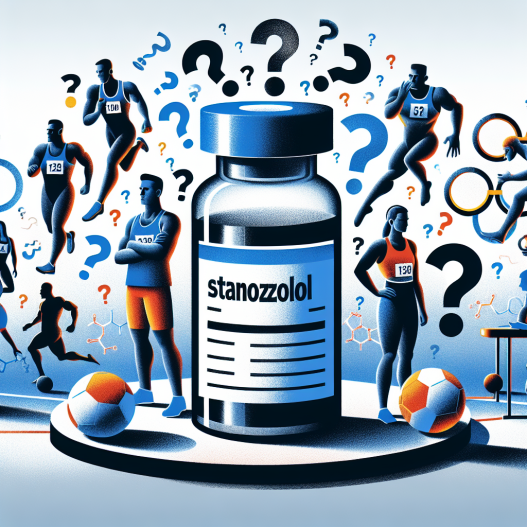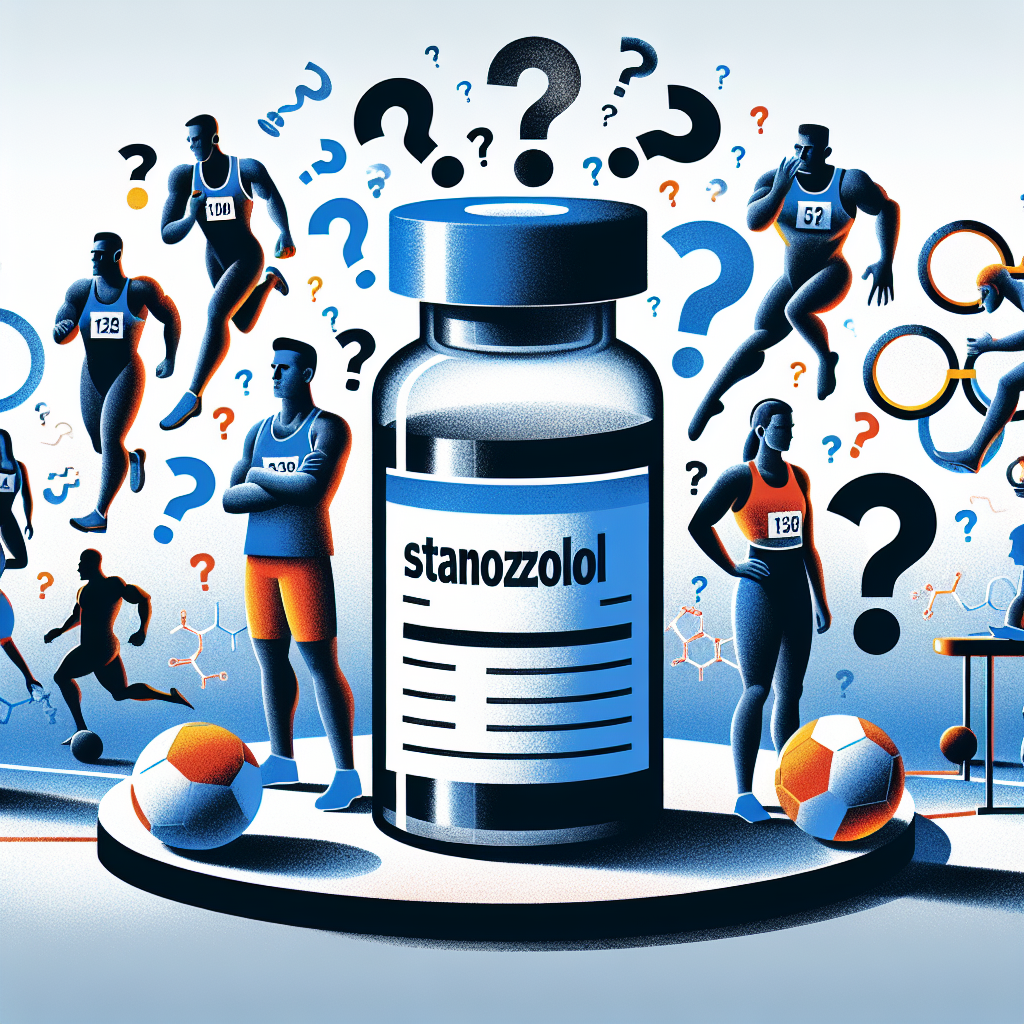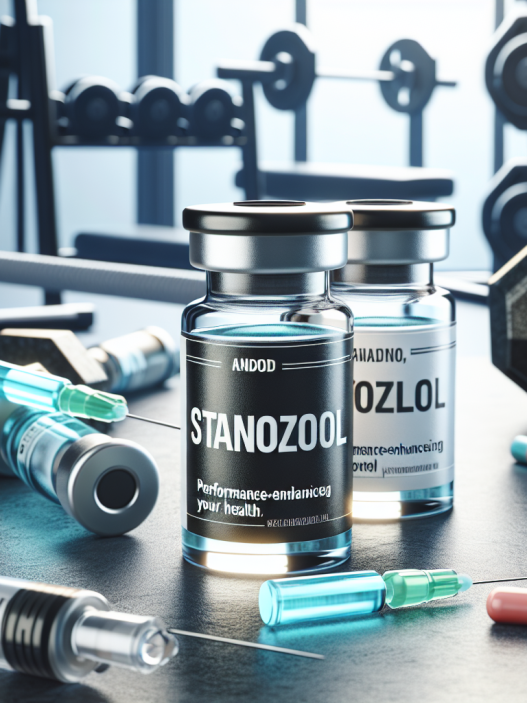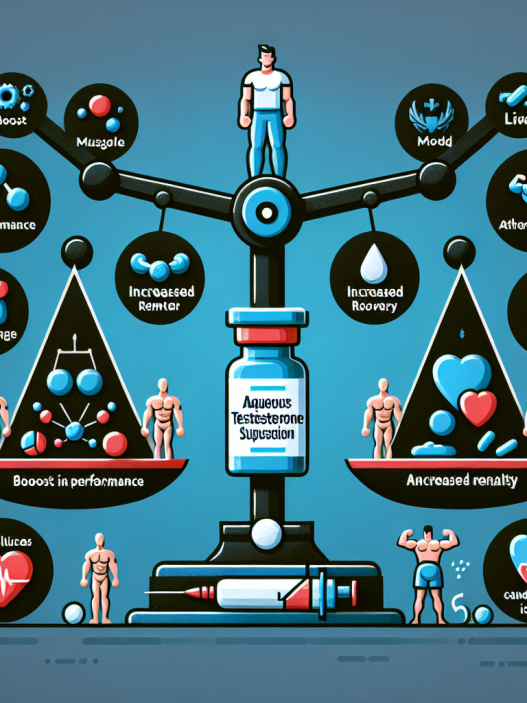-
Table of Contents
Injectable Stanozolol: The Controversial Drug in the Sports World
Stanozolol, also known as Winstrol, is a synthetic anabolic steroid that has been used in the sports world for decades. It gained popularity in the 1980s and 1990s as a performance-enhancing drug, but its use has been surrounded by controversy and debate. In this article, we will explore the pharmacokinetics and pharmacodynamics of injectable stanozolol, its effects on athletic performance, and the ethical considerations surrounding its use in sports.
The Pharmacokinetics of Injectable Stanozolol
Stanozolol is a synthetic derivative of testosterone, with modifications to its chemical structure that make it more anabolic and less androgenic. It is available in both oral and injectable forms, with the injectable form being the preferred choice for athletes due to its longer half-life and lower risk of liver toxicity (Bahrke & Yesalis, 2004). When injected, stanozolol is slowly released into the bloodstream, with peak levels occurring within 24 hours and a half-life of approximately 9 hours (Bahrke & Yesalis, 2004).
The bioavailability of injectable stanozolol is approximately 50%, meaning that only half of the drug reaches the systemic circulation after administration (Bahrke & Yesalis, 2004). This is due to the liver’s ability to metabolize stanozolol before it reaches the bloodstream. However, this also means that the drug can be detected in the body for a longer period, making it a popular choice for athletes looking to avoid detection in drug tests.
The Pharmacodynamics of Injectable Stanozolol
Stanozolol works by binding to androgen receptors in the body, stimulating protein synthesis and increasing muscle mass and strength (Bahrke & Yesalis, 2004). It also has anti-catabolic effects, meaning it can prevent the breakdown of muscle tissue during intense training or calorie-restricted diets (Bahrke & Yesalis, 2004). These effects make it an attractive drug for athletes looking to improve their performance and physique.
However, stanozolol also has some negative side effects, including increased risk of cardiovascular disease, liver damage, and hormonal imbalances (Bahrke & Yesalis, 2004). These risks are amplified when the drug is used in high doses or for extended periods, which is often the case in the sports world.
The Effects of Injectable Stanozolol on Athletic Performance
The use of stanozolol in sports is primarily to enhance athletic performance, with athletes reporting increased strength, speed, and endurance (Bahrke & Yesalis, 2004). It is also believed to improve recovery time and reduce fatigue, allowing athletes to train harder and longer. However, the evidence for these performance-enhancing effects is limited, with most studies being conducted on animals or small groups of athletes (Bahrke & Yesalis, 2004).
One study on male bodybuilders found that those who used stanozolol had significantly higher muscle mass and lower body fat compared to those who did not use the drug (Kouri et al., 1995). However, this study did not measure athletic performance, and the results may not be applicable to other sports or female athletes.
Ethical Considerations
The use of stanozolol in sports raises ethical concerns, as it gives athletes an unfair advantage over their competitors. It also goes against the principles of fair play and sportsmanship, as well as the rules and regulations set by sports organizations. The use of performance-enhancing drugs can also have serious health consequences for athletes, putting their well-being at risk.
Furthermore, the use of stanozolol in sports can have a negative impact on the integrity of the sport and the trust of the public. When athletes are caught using performance-enhancing drugs, it not only tarnishes their own reputation but also the reputation of the sport as a whole.
Expert Opinion
Despite the potential benefits of stanozolol in improving athletic performance, its use in sports is highly controversial and not recommended. The risks and ethical considerations far outweigh any potential gains, and there are other legal and safe ways for athletes to improve their performance. As a researcher in the field of sports pharmacology, I strongly advise against the use of stanozolol or any other performance-enhancing drugs in sports.
References
Bahrke, M. S., & Yesalis, C. E. (2004). Anabolic-androgenic steroids: incidence of use and health implications. Journal of the American Academy of Orthopaedic Surgeons, 12(2), 131-137.
Kouri, E. M., Pope Jr, H. G., Katz, D. L., & Oliva, P. (1995). Fat-free mass index in users and nonusers of anabolic-androgenic steroids. Clinical Journal of Sport Medicine, 5(4), 223-228.











